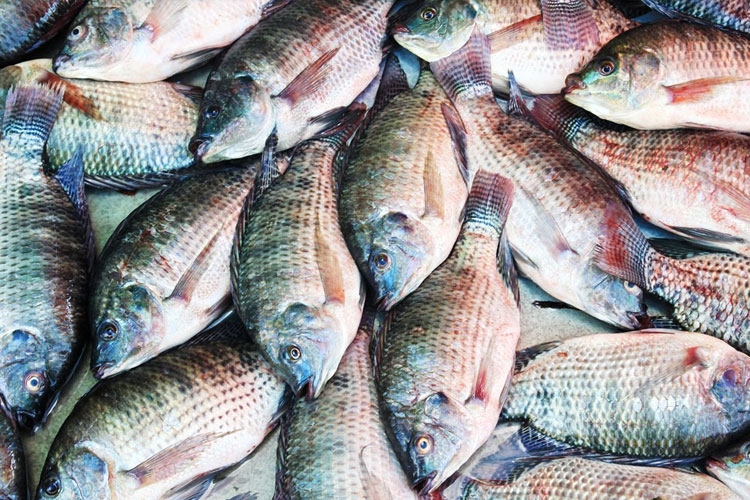Do you have trouble sleeping? If so, you’re like the 50–70 million Americans that the Centers for Disease Control and Prevention estimates have sleep or wakefulness disorders. To say that sleep is essential for good health is an understatement, which is why those of us who have trouble sleeping are always on the lookout for solutions.
One touted solution you may have heard of is melatonin, a supplement that some claim wards off jet lag and sleep issues. But, does it really help do that? First, let’s get the scoop on what this supplement is about, and then dive into the nitty-gritty data on whether or not it works.
What is melatonin?
Melatonin is a hormone that helps regulate your body’s internal clock, which drives your sleep and wake cycles. Your brain naturally produces melatonin in response to a lack of light at night. As your melatonin level peaks around bedtime, you become groggy and drift off to sleep. However, most of us live in a brightly lit world surrounded by artificial light, and phone, computer and television screens, which can affect our body’s natural production of melatonin.
5 Ways Melatonin Supplements Can Improve Your Sleep
Some research suggests that taking a melatonin supplement at the right time might help treat jet lag, insomnia or other sleep disruptions. Melatonin can also reduce the time it takes to fall asleep, although this effect is typically mild.
It might also play an important role with pain. How? Pain can reduce both the length and quality of sleep, and poor sleep can increase the experience of pain. Promoting good, restful sleep can minimize the experience of pain as you heal. Sleep also is important to the healing process. Healthy levels of melatonin during sleep act as an antioxidant and can help support the overall process of normal healing. To summarize, melatonin supplements can support you in several ways:
- Decrease the time to fall asleep*
- Improve the ability to stay asleep*
- Enhance the depth of sleep*
- Help maintain normal circadian rhythms*
- Act as an antioxidant to support health and healing*
4 Essential Things to Know About Getting More Melatonin
Thinking about a melatonin supplement? Here are 4 things you should know:
- Keep an eye out for dose. An amount of bedtime melatonin as low as 0.3 mg has been shown to help improve sleep quality. Daily amounts in the range of 3–10 mg are more commonly used.
- Know your source. Depending on your preference, you can get more melatonin via supplements or through food. Small amounts of melatonin are found in foods such as walnuts, corn and asparagus. Some research suggests that the concentrated juice of the tart cherry (also known as sour or Montmorency cherry) is a good source, although the research is conflicting.
- Be aware of side effects. When taken as suggested, side effects from a melatonin supplement are uncommon. Possible melatonin side effects include daytime sleepiness, headaches and dizziness. Other, less common melatonin side effects include abdominal discomfort, mild anxiety, irritability, confusion and short-lasting feelings of depression.
- Keep your health history in mind. If you are considering a melatonin supplement, then check with your health-care professional first, especially if you are pregnant, have a health condition or are taking other medications. Melatonin supplements can interact with blood thinning medications, diabetes medications, immunosuppressant and birth control pills.
*These statements have not been evaluated by the Food and Drug Administration. This product is not intended to diagnose, treat, cure or prevent any disease.
Written By My Fitness Pal
By now most of us know too much sugar isn’t good for us and that overdoing it on the sweet stuff is linked to obesity, Type 2 diabetes, metabolic disease, fatty liver and other chronic health conditions. For whatever reason though, most of us still find it hard to resist sweet treats, beverages and snacks.
I’m willing to bet many of us have experienced intense sugar cravings or have binged on sweets before — experiences that leave us feeling powerless in the presence of certain foods and questioning whether we have a sugar dependency. But is sugar addiction even real? This is one of the most common questions I hear as a dietitian — the answer to which boils down to whether sugar is an addictive substance or not.
Is sugar addictive?
Despite many similarities in addiction characteristics — like bingeing, tolerance and withdrawal — the Diagnostic and Statistical Manual of Mental Disorders, the manual by which mental-health professionals classify mental disorders in the United States, does not currently contain a clinical diagnosis specifically for sugar or food addiction. This is largely because there is little clinical research in humans to substantiate the idea that food or sugar addictions are real.
But just because we lack a diagnosis for sugar addiction doesn’t mean that sugar isn’t addictive.
Eric Stice, PhD, a neuroscientist who has extensively studied sugar’s effects on the brain, says consuming highly palatable foods — like those containing high amounts of sugar — activates the same key reward regions of the brain that are triggered when a person does drugs like cocaine. Biologically this makes sense since, back in our hunting and gathering days, sugar was a rare and valuable source of energy. Back then, a strong reward response to sugar was beneficial since it sent us seeking more. This also explains how the human body has adapted to almost effortlessly convert sugar into fat.
n addition to brain-imaging studies in humans, there is strong animal research to support the legitimacy of sugar addiction. “In regards to animal data, I can be a little more assured about a true addiction with intermittent sugar intake, which has been proven in animal models,” says Dr. James DiNicolantonio, a doctor of pharmacy. “Not because sugar activates similar neurochemical pathways but because rats fed intermittent sugar intake go through druglike withdrawals when sugar is removed from their diets. Not only that, giving rats who are consuming an intermittent sugar intake regime naloxone, an opiate antagonist, also produces withdrawals — the same withdrawals experienced if hooked on morphine or cocaine.”
When asked whether he thought sugar addiction was real, Dr. Robert Lustig, a childhood obesity expert and leading obesity researcher, said it certainly is in animals.“According to the DSM-5 criteria, sugar is addictive,” he says. “We have the data mechanistically in animals, we have the correlative data in humans and we certainly see this empirically in our patients.”
In practice, doctors and dietitians often look for addiction characteristics in a patient’s eating habits to determine whether food or sugar addiction may be present. Of those, bingeing and withdrawal are the easiest to identify, but Stice has found that people who consume high amounts of sugar can indeed develop tolerance, which further supports the notion that sugar is addictive.
What about sugar withdrawal?
Ask anyone who’s slashed added sugar from their diet cold turkey, and they’ll likely tell you sugar withdrawal is real. As is common with caffeine, nicotine and other addictive substances, people withdrawing from sugar typically feel pretty lousy during the process. The most common symptoms include irritability, fatigue, headaches, insomnia, cravings, malaise and feeling “foggy.” Of course, symptoms vary greatly and will depend upon regular sugar intake, individual physiology and whether you’re going cold turkey or using a tapering approach. If you happen to be the unfortunate person who experiences all of these symptoms simultaneously, know that it is temporary. Based on Lustig’s observations, sugar withdrawal usually lasts 4–5 days — after which patients generally report major improvements in both mood and energy levels.
5 Tips to Beat Sugar Addiction
1. Commit to cut back, and pick the approach that’ll work for you.
Leslie Lee, MS, RD, recommends abstinence and moderation as approaches to limiting sugar. Both approaches can work, but one might be better suited to your personality, eating habits and lifestyle. Quitting cold turkey requires more preparation up-front, Lee says, since you’ll have to “be prepared to manage the withdrawal symptoms, and pragmatically, one has to be prepared to eat in an entirely different manner.”
“If you’re just someone who thinks they might be overdoing it on sugar, then perhaps a gradual reduction is doable and can be accomplished with relative ease,” she adds.
Regardless of your approach, Lustig and the American Heart Association recommend a maximum of 100 calories (25 grams) of added sugar per day for women and 150 calories (37.5 grams) for men.
2. Keep your eye on the Nutrition Facts label and ingredient lists.
Being aware of hidden sources of added sugar is half the battle here. Soon Nutrition Facts labels will have to show the amount of sugar added to the packaged foods you buy, not just the total amount. That’s good news for those who may not know all of the nicknames for added sugar and have a hard time spotting it in the ingredient list.
3. Eat high-quality carbohydrates in place of added sugar.
Yes, you read that right! Love ’em or hate ’em, carbohydrates are not created equal. A diet low in added sugar doesn’t have to be low-carbohydrate, which is good news for those of us in the carb-lovers camp. A recent study led by Lustig showed that simply removing fructose (from added sugar) from the diet for just 10 days reduced liver fat, an indicator of metabolic disease, by nearly 30%. Wholesome carbohydrates to consider include sweet potatoes, brown rice, oatmeal and whole-grain bread made without added sugar.
4. Replace sugary treats with nonfood rewards.
If your idea of a reward is frozen yogurt topped with cookie crumbles and chocolate sauce, consider nonfood rewards instead. Treat yourself to a special group workout class, a manicure, a movie, even a lazy morning in bed. If you want a sweet treat, go for something nutritious and low-glycemic that won’t trigger a binge. Berries, kiwi and oranges (whole, not juiced) are great options.
5. Find better ways to manage stress
For many of us, eating palatable foods, like those high in sugar, is how we cope with stress. That’s because stress primes brain for addictive eating patterns and can create cravings for sugar, says Elissa Epel, PhD, an expert on the impact of stress on food intake and obesity. Some of her research at the University of California, San Francisco, also shows that sugar dampens the stress response — which can be a pretty powerful reinforcement to keep eating the sweet stuff when times get tense.
Instead of turning to sugar for solace, explore other ways to manage stress, like yoga, meditation, running or journaling.
Written By My Fitness Pal
The true chicken-of-the-sea, tilapia is a mild-tasting white fish that’s cheap to breed and easy to sell.
In fact, for the first time in 2012, farmed fish production topped that of beef, reaching a record 66 million tons, compared with beef at 63 million. But there’s a dirty secret about tilapia, the lean-meat alternative that beckons you in the supermarket–promises of weight loss, a healthy heart and beautiful skin ringing in your ears. While most health experts agree we should be eating more fish (for all the reasons listed above), this Eat This, Not That! research has found the inflammatory potential of farmed tilapia to be greater than a burger, doughnuts—even pork bacon! It gets worse …
It’s the Worst Kind of Fat
Compared with other fish, farmed tilapia contains relatively small amounts of beneficial omega-3 fatty acids–the heart-healthy and essential fish oils touted by health and nutrition experts as the main reason to eat fish frequently. While a portion of salmon has over 2,000 milligrams of omega-3 fatty acids, a serving of tilapia has a mere 135 milligrams. Moreover, because farmed tilapia subsist on a diet of corn and soy instead of lake plants, they’re proportionally sky high in omega-6 fats, which studies have proven to harm the heart, the brain, and even your mood. The Wake Forest University study that produced the tilapia vs. bacon findings revolves around this dangerous omega 6:3 proportion.
They Have the Crappiest Diet
There’s a good chance the tilapia on your plate was raised on a poop diet (that’s poop as a noun, not an adjective). Research from the Johns Hopkins Center for a Livable Future revealed the gory details of disease-ridden fish farms in Asia, where pig and chicken feces serve as a cheaper alternative to standard fish food. While the FDA vehemently denied any of these goings-on, the Johns Hopkins investigation revealed only 2 percent of imported seafood to the United States is actually tested for contamination. It’s not just mega gross. Experts worry that the large amounts of antibiotics given to the fish to ward off infections may give rise to antibiotic-resistant strains of salmonella.
They’ve Had a Sex Change
Virtually all tilapia sold in American supermarkets has undergone a sex change–the result of being fed methyltestosterone during the early, sexless stage of life. Tilapia pumped full of hormones grow bigger quicker than their natural bros, because they don’t expend energy developing reproductive organs and require less food. Seafood experts consider the effects of methyltestosterone in fish to be insignificant to our health. However, there’s research to suggest the drug can be highly toxic to the liver. In fact, methyltestosterone has been taken off the market in Germany due to its high potential for liver toxicity.
They Cause a Negative Environmental Impact
Environmentalists argue that intensive and unregulated tilapia farming is damaging ecosystems, leaving dead lakes and extinct species in poor countries with practices prohibited in the United States. In Nicaragua, for example, huge numbers of fish are bred in cages, where fish waste pollutes the lake water. Such was the case at Lake Apoyo, where pollution killed off the aquatic plants, leaving the lake a wasteland.
Eat This, Not Tilapia!
When it comes to choosing a fish that qualifies as one of the foods that will help you lose weight and one of the healthiest for your body—and the Earth—abide by the number one rule: Stay off the farm. Farmed seafood, not just tilapia, can have up to 10 times more toxins than wild fish, according to Harvard Researchers. Your best choices at the fish counter include: Wild Alaskan Salmon, Alaska Pollok, Atlantic Cod, Clams, Blue Crab, Atlantic Mackerel, Striped Bass, Sardines, Herring, Rainbow Trout and Flounder.
Written by Eat This.com
Water is an essential nutrient that makes your body run smoothly and efficiently. Because the average adult’s body is about 65% water, it’s no wonder that we can only survive for about 3 to 5 days without it! Water transports nutrients and oxygen to cells, carries away waste products and lubricates our digestive tracts, joints and cartilage. The Health and Medicine Divisionsuggests an adequate total fluid intake of about 13 cups per day for men and about 10 cups per day for women. (Keep in mind that you may need more or less, depending on activity level, body size and environment.)
As the foundation for all body functions, this zero-calorie drink is a liquid asset, especially for weight loss. Here are 5 reasons why you should make water your weight-loss pal:
- It curbs hunger and promotes satiety. The body’s “thirst center” in the brain, the hypothalamus, also regulates appetite. When you’re dehydrated, your body can perceive mixed signals on hunger, causing you to believe that you need to eat when you’re actually just thirsty. One study found that drinking two 8-ounce glasses of water before meals helped subjects lose more weight. Hungry? Drink some water first. Staying hydrated can help you ward off fake hunger signals.
- It keeps your mind sharp. In addition to being naturally calorie-free, sugar-free and caffeine-free, water helps transport oxygen to the brain to ensure it functions at optimum levels. Even mild dehydration can impact your cognitive performance, tamper with your mood and make you feel fatigued. These effects can lead to mindless stress eating, poor food choices and, ultimately, breaking the calorie bank. Next time you’re feeling spaced out, try drinking some cold water to zap the sluggishness out of you.
- It powers your workouts. In addition to boosting your metabolism, water helps prevent muscle cramping, so you can work out harder and longer. Take note that your water needs increase after working out. During long endurance workouts, drink water with carbohydrates and electrolytes to help maintain fluid balance and prevent post-exercise exhaustion.
- It helps with regularity. From start to finish, water keeps your digestive system running smoothly. The saliva in your mouth contains water and digestive enzymes to break down your food. In your stomach, water balances the acidic environment to prevent ulcers, indigestion and heartburn. If you’re following a high-fiber diet, be extra diligent in drinking water, as fiber depends on it. Soluble fiber absorbs water to become a gel like mass that slows down the rate at which food leaves the stomach, and insoluble fiber traps and retains water to add bulk and moisture to your stool, which prevents constipation.
- It helps you save on calories. Liquid calories like juices and sodas don’t fill you up, and their high sugar content can cause insulin spikes that can set you up for a crash. According to this systematic review, drinking water in place of sugar-sweetened beverages resulted in less weight gain over a four-year period. If you want more pizzazz than plain water, try sparkling water, or give it a flavor makeover with berries, cucumbers, mint or grapefruit.
Make water a part of your weight-loss journey by getting enough of this essential nutrient in your daily diet. Try these 20 great life hacks to help you reach your goal, and don’t forget to log your water on the MyFitnessPal app — we make it easy to track your intake. Drink up and stay hydrated!
Written by My Fitness Pal




